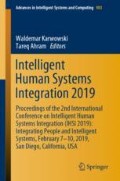Abstract
This study used the random forest algorithm to predict Senior Fitness test results on the execution of Synchronized Monitoring Analysis Record Care (SMARC) programs with the aim of aiding healthcare professionals in modifying patients’ training routines to improve their effectiveness. Twenty-three subjects in a community center performed a fitness training routine using the SMARC series of equipment and training modes, and took timed “Up and Go” tests before and after their performances. The 74 combined features (categorical + numerical) of the series were used as input features, and performance was measured by the Timed Up and Go (TUG) score. The results show that the top five features ranked with the highest importance were associated with Machines F (16.5%), D (15.4%), E (13.9%), H (13.9%), and B (12%), with 35% unassignable. The results can aid healthcare professionals in planning and adjusting more targeted health-promotion exercises programs using assistive devices for the elderly.
Access this chapter
Tax calculation will be finalised at checkout
Purchases are for personal use only
References
Taiwan Health Promotion Administration, Ministry of Health and Welfare. http://www.hpa.gov.tw/English/file/ContentFile/201502140514171717/2014_Health_Promotion_Administration_Annual_Report.pdf
Department of Information Services, Executive Yuan. Health & Welfare. http://www.ey.gov.tw/en/cp.aspx?n=F85CABCA09695756
Jones, J., Rikli, E.: Measuring functional fitness of older adults. J. Act. Aging 1, 24–30 (2012)
Breiman, L.: Random forests. Mach. Learn. 45(1), 5–32 (2001)
Pedregosa, F., et al.: Scikit-learn: machine learning in Python. J. Mach. Learn. Res. 12, 2825–2830 (2011)
Geurts, P., Irrthum, A., Wehenkel, L.: Supervised learning with decision tree-based methods in computational and systems biology. Mol. BioSyst. 5(12), 1593–1605 (2009)
Cutler, A., Cutler, D.R., Stevens, J.R.: Random forests. In: Zhang, C., Ma, Y. (eds.) Ensemble Machine Learning, pp. 157–175. Springer, Boston (2012)
United Lifestyle. SMARC (2018). http://unitedlifestyle.com/smarc/. Accessed 26 Oct 2018
Author information
Authors and Affiliations
Corresponding author
Editor information
Editors and Affiliations
Rights and permissions
Copyright information
© 2019 Springer Nature Switzerland AG
About this paper
Cite this paper
Lee, C.H., Sun, TL., Flores, D.E.R., Jiang, B.C. (2019). Applying Random Forest Method to Analyze Elderly Fitness Training Routine Data. In: Karwowski, W., Ahram, T. (eds) Intelligent Human Systems Integration 2019. IHSI 2019. Advances in Intelligent Systems and Computing, vol 903. Springer, Cham. https://doi.org/10.1007/978-3-030-11051-2_40
Download citation
DOI: https://doi.org/10.1007/978-3-030-11051-2_40
Published:
Publisher Name: Springer, Cham
Print ISBN: 978-3-030-11050-5
Online ISBN: 978-3-030-11051-2
eBook Packages: Intelligent Technologies and RoboticsIntelligent Technologies and Robotics (R0)

